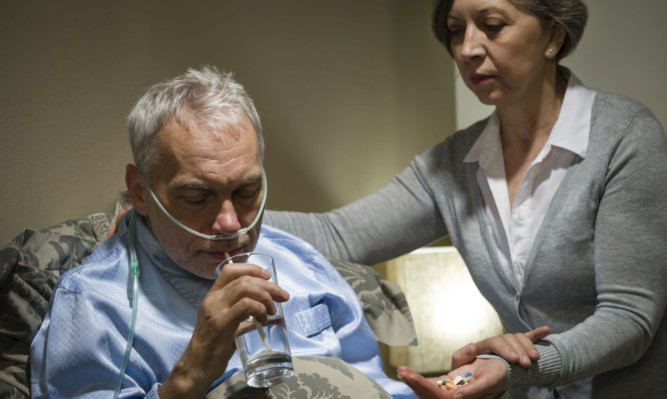More than a quarter of Fife’s army of unpaid carers are spending at least 50 hours per week looking after others, it has been revealed.
The majority of those with the biggest burden are pensioners, although many are younger with homes and families to look after.
Those spending long hours caring have reported the strain is affecting their health, prompting calls for better support for carers.
A recent survey by Leeds University found unpaid carers saved the Scottish Government £10.3 billion a year, raising fears that the entire system could collapse without them.
Fife’s director of public health, Dr Edward Coyle, said just under 10% of the region’s population provides unpaid care to someone who is ill, disabled or elderly, either within or outwith their household. The figure is similar to the national average of 9.3%.
In a report to the NHS Fife board, Dr Coyle said while the number of carers has not increased in the last 10 years, the number of hours they spent providing care had.
According to the 2011 census, Fife has 34,717 unpaid carers. Just more than 17% of those are aged 50 to 64, with 11.2% aged 65 or older. Just more than 44% of the over 65s spent more than 50 hours per week caring.
“The proportion of carers providing between 20-29 hours per week and 50 hours or more have both increased from 12% to 17% and from 22% to 26% between 2001 and 2011,” Dr Coyle said.
The majority of carers are retired but Dr Coyle reported that 42% are holding down a job in addition to their caring duties.
He said increasing hours of providing unpaid care was associated with poorer health, with fewer people who provide more than 50 hours of care a week rating their own health as good or very good than those who provide fewer hours of care.
NHS Fife board member Rona Laing questioned the effect caring for long hours was having on carers. “We have no sense at all of how good we are at supporting carers,” she said.
“I don’t think it’s a bad thing there are so many people doing this but they need support.”
Fellow member Andrew Rodger agreed, adding: “We should really take the interests of unpaid carers on board because without them the system would collapse.”
Dr Coyle said many carers are being supported by the voluntary sector.
“We have people caring but at the point the carers need care themselves, it starts to fragment.”
